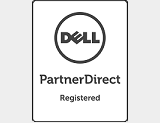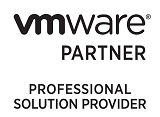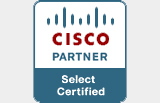Communication
Systems Inc.
Communications
Specialists

What Features are gained by each level of MICS upgrade
Features to be gained by upgrading: The following features may be gained by upgrading the MICS from a lower level, (starting at MICS R1T1), to a higher level, (either 1.0, 1.1, 2.0, 3.0, 4.0, 4.1, 5.0, 6.0 or 6.1).
Please note that not all features to be gained are available with all levels of revision/upgrade. Also note that upgrading to Version 6.0 or higher requires upgrading the NAM (Voice Mail) as well.
1) Administration and Configuration tree (new programming structure) – Does not effect end user. (available for MICS 2.0; 3.0;4.0; 4.1; 5.0; 6.0; 6.1)
2) Alpha Tagging – Tags System Calls with name and number. (available for MICS 6.0; 6.1)
3) Analog Station Module Recognition – Allows for installation of Eight analog stations at a time. Please note: analog stations can currently be added to MICS 1.0 via Analog Terminal Adaptors, however one adaptor is needed per analog terminal/phone. (available for MICS 1.1; 2.0; 3.0;4.0; 4.1; 5.0; 6.0; 6.1)
4) Automatic Daylight Savings Time – System automatically switches time between Daylight Savings Time and Standard Time. (available for MICS 1.1; 2.0; 3.0;4.0; 4.1; 5.0; 6.0; 6.1)
5) Call Park Codes (25 instead of 9) – Allows users to park up to 25 calls at a time instead of just 9. Call park is a system wide “hold” where users dial a 3 digit code from any phone to retrieve the call. (available for MICS 2.0; 3.0;4.0; 4.1; 5.0; 6.0; 6.1)
6) Round Robin Park Code Assignment – Park Codes can be assigned in a round robin fashion versus always starting at the first code. (available for MICS 1.1; 2.0; 3.0;4.0; 4.1; 5.0; 6.0; 6.1)
7) CLID On All Target Lines – All Target Lines will show Caller ID. (Note target lines require DID trunks). (available for MICS R1T1; 6.0; 6.1)
8) CLID When Busy – Incoming Caller ID will be displayed on the users set even when a user is on another call. (Requires target lines/DIDS) (available for MICS 6.1)
9) 300 Caller Logs – CLID logs = 300 total for entire system. (available for MICS 1.1)
10) 600 Caller Logs – CLID logs = 800 total for entire system. (available for MICS R1T1; 1.0; 2.0; 3.0;4.0; 4.1; 5.0; 6.0; 6.1)
11) Copy Settings for Control Sets and Lines – Makes programming some settings much easier for Maintenance personnel. Does not effect end user. (available for MICS R1T1; 6.0; 6.1)
12) Destination Code Length – Maximum allowed digits increases from 7 to 12. This is a feature associated with Least Cost Routing which allows dialed digits to be matched against a table for most cost effective routing. (available for MICS 6.1, R1T1)
13) Distinctive Line Ringing – Can assign one of four distinctive ringing patterns to a line. (Note that once a distinctive ring is assigned to a particular line, at any phone set, that ring it cannot be used for any other line, on any other set on the system). (available for MICS 6.0; 6.1)
14) Hunt Group Distinctive Ring – Hunt Groups can be assigned one of four distinctive ring patterns/tones. Please note that once a distinctive ring is assigned to a hunt group it cannot be assigned to another hunt group or any other lines. (available for MICS 6.0; 6.1)
15) ETSI Network Call Redirection – European Networking Feature. Not applicable to North America. (available for MICS 1.1; 6.0; 6.1)
16) External Call Forward – Calls to Stations can be forwarded to external numbers. (Not to be confused with Line Redirection which allows Lines appearing on a given set to be forwarded, or redirected, to an external number) (available for MICS 4.1; 5.0; 6.0; 6.1)
17) Hospitality Services – Typically Used in Hotel/Motel environments, provides features such as Alarm Clock (for wake-up call service), Room Condition (for letting maid service provide front desk indication of whether or not a room has been cleaned), and Room Occupancy (works with room condition to allow front desk personnel to assign occupancy condition and restriction filters to room phones). (available for MICS 4.1; 5.0; 6.0; 6.1)
18) Hunt Groups – Enable a single extension number to be used to call a group of sets. Hunt Groups replace Incoming Line Groups on MICS 4.0 and higher). Improves call answering coverage and allows calls to ring in independent of individual stations Voice Mail Coverage and Call Forward assignments. (available for MICS 4.0; 4.1; 5.0; 6.0; 6.1)
19) Incoming Line Groups - (See Above) (available for MICS 1.1; 2.0; 3.0)
20) IDM Support – Allows for installation of Integrated Data Modules which will allow Ethernet LAN connectivity for up to 12 Ethernet devices to the ICS and allows WAN bridging and routing via T-1 which can be shared between voice calls and data traffic. (available for MICS 3.0;4.0; 4.1; 5.0; 6.0; 6.1)
21) ISDN BRI and PRI support – ISDN technology provides a fast, accurate and reliable means of sending and receiving Voice, Data, Images, Text and other information through existing analog telephone wires. Both PRI and BRI also allow for out of band signaling for faster call setup and tear-down, as well as higher bandwidth and speed than analog transmission because of its end-to-end digital connectivity on all transmission circuits. There are two types of ISDN service BRI and PRI BRI has 2 Bearer Channels and 1 Data Channel PRI has 23 Bearer Channels and 1 Data Channel. Bearer Channels can carry voice and data and have speeds of 64kbs per channel. The D-channel provides for call set-up instructions and signaling, also known as out-of-band signaling, and feature activation information at speeds of 16kbps for BRI and 64 kbps for PRI. Data information consists of control and signal information and packet switched data, such as credit card verification. Both BRI can provide dial-up internet and LAN access and a PRI can be used to Network the MICS with a Meridian 1 or other MICS units. The PRI can also be used in conjunction with DID’s and/or Dial out pools to provide a more cost effective means of Trunking as each PRI can provide call-by-call service for up to 23 simultaneous calls. (available variously for MICS 2.0; 3.0;4.0; 4.1; 5.0; 6.0; 6.1 – see below for specific features and types of service)
22) BRI Basic Call Trunking – Trunking in calls over a BRI connection. (Can receive incoming calls from the public network via the BRI loop). (available for MICS. 3.0;4.0; 4.1; 5.0; 6.0; 6.1)
23) BRI Calling Name ID – Will display network name of parties involved in a call. (available for MICS 4.0; 4.1; 5.0; 6.0; 6.1)
24) BRI Calling Number ID (Incoming Calls only) – Will display number of calling party. (available for MICS 2.0; 3.0;4.0; 4.1; 5.0; 6.0; 6.1)
25) BRI Subaddressing – Can perform sub-addressing of Terminal Equipment on the same BRI loop. However, terminal equipment which supports sub-addressing is not commonly available in North America. (available for MICS 2.0; 3.0;4.0; 4.1; 5.0; 6.0; 6.1)
26) PRI Basic Call Trunking – Can receive incoming calls from the public network via the PRI circuit. (available for MICS 4.0; 4.1; 5.0; 6.0; 6.1)
27) PRI Calling Name ID – Will display the network name of calling party. (available for MICS 4.0; 4.1; 5.0; 6.0; 6.1)
28) PRI Calling number ID – Will show the number of the calling party as long as it is provided by the public network. (available for MICS 4.0; 4.1; 5.0; 6.0; 6.1) Will Show Caller ID while on another call. (available for MICS 6.0; 6.1)
29) PRI Call-by-Call Services and Fractional PRI – Allows a user to access services or private facilities such as Foreign Exchange, Tie Lines and OUTWATS without the use of dedicated facilities for these services. The number of channels dedicated to each call type can be programmed from 0 to 23 which also allows for use with a Fractional PRI by disabling unused channels. (available for MICS 4.0; 4.1; 5.0; 6.0; 6.1)
30) PRI E911 – When calling out through the PRI the telephone number AND the internal extension number of the calling party is transmitted to the Public switched Telephone Number. Allows for more accurate location identification of a caller by the PSAP (911 center) when used in conjunction with DID lines and OLI (Outgoing Line Identification) (available for MICS 4.0; 4.1; 5.0; 6.0; 6.1)
31) ETSI MCID – European Telecommunications Standard Institute Malicious Caller ID Support. The Malicious Caller Identification (MCID feature enables a called party inside an enterprise network to use a configurable sequence of digits to notify the local law enforcement agency of a malicious call. This is for the European Standard. (available for MICS 6.0; 6.1)
32) Static Time and Date – Constantly shows current date and time on display. (available for MICS 2.0; 3.0;4.0; 4.1; 5.0; 6.0; 6.1)
33) Networking Norstar to Meridian 1 – Allows for Networking the MICS to a Meridian PBX with the following features listed below: (available for MICS 4.0; 4.1; 5.0; 6.0; 6.1)
34) Networking to Meridian 1 Centralized PSTN – Allows for centralized Trunking through the Meridian 1 to the PSTN. This lets the Meridian 1 handle all the routing for the MICS and allows for concentration of resources for cost savings. (available for MICS 4.0; 4.1; 5.0; 6.0; 6.1)
35) Networking to Meridian 1 Coordinated Dialing Plan (CDP) – Allows for a Coordinated or Transparent Dialing Plan on the network where all DN number on the entire network are unique and of a uniform length. (available for MICS 4.0; 4.1; 5.0; 6.0; 6.1)
36) Networking to Meridian 1 Name and Number ID – The name and number of all parties involved in a network call are displayed. (available for MICS 4.0; 4.1; 5.0; 6.0; 6.1)
37) Networking to Meridian 1 MCDN (Centralized Voice Mail) – Allows for all network voice mail to be centralized to help reduce costs and to allow the sharing of messages between systems on the network. (available for MICS 5.0; 6.0; 6.1)
38) Networking to Meridian 1 MCDN ICCL – ISDN Call Connection Limitation. Limits the number of hops to a defined transit counter to prevent the creation of a continuous loop. (available for MICS 6.0; 6.1)
39) Networking to Meridian 1 MCDN TAT – Trunk Anti Tromboning. Prevents unnecessary use of system resources when transferring active calls back and forth over the network by eliminating redundant paths between systems. (available for MICS 6.0; 6.1)
40) Networking to Meridian 1 MCDN Camp-On – Allows an Operator on the Meridian 1 to camp-on a call across the network to a networked KSU (MICS). (available for MICS 6.0; 6.1)
41) Networking to Meridian 1 MCDN Break-In – Allows an Operator on the Meridian 1 to Barge-In on a call through the network to a station on a remote KSU (MICS). (available for MICS 6.0; 6.1)
42) Networking Norstar-to-Norstar - Allows for Networking Norstars MICS together with Centralized features such as Voice Mail, Attendant, Applications and management. (available for MICS 6.0; 6.1)
43) Outgoing Name/Number Blocking – Users can send outgoing name/number blocking header to PSTN on a call-by-ball basis. Name and Number will not be displayed at the receiving end. (available for MICS 4.1; 5.0; 6.0; 6.1)
44) Page Time-Out – A timer can be set so that once a page is initiated, the timer starts and will end the page connection after expiration of the timer. Helps prevent inadvertent lock-up of the paging in an open, or on, condition. Also helps deter obnoxiously lengthy pages. (available for MICS 1.1; 2.0; 3.0;4.0; 4.1; 5.0; 6.0; 6.1)
45) Page Tone On/Off – Allows for enabling or disabling the page preannounce tone. (available for MICS 1.1; 2.0; 3.0;4.0; 4.1; 5.0; 6.0; 6.1)
46) Private Networking – Allows for networking the MICS without using the PSTN to provide such feature as a Common, or Coordinated, Dialing Plan; Centralized Voice Mail; Centralized Trunking; Centralized Attendant; Sharing of Single Application and Resources to improve ROI, and easier management since applications can be managed as a single unit. (available for MICS 5.0; 6.0; 6.1)
47) Centralized Voice Mail on Norstar – Allows one Norstar to host the Voice Mail for the entire Network and thus provide for easier interface between all voice mail boxes and their users. Also reduces Costs as Voice Mail unit is not needed for each MICS in the Network (available for MICS 6.0; 6.1)
48) Centralized Auto Attendant on Norstar – Allows one Auto Attendant to handle all the Calls for the Entire Network. This saves money as only one Auto Attendant need be purchased for all the MICS/Norstars, and also provides outside callers with for easier and seamless progression through the network via the Centralized Auto Attendant. (available for MICS; 6.0; 6.1)
49) Routing Service Routes – Allows Routes to be defined for various Destination Codes. Often associated as Least Cost Routing, the MICS automatically sends/Routes a call to specific trunks depending on the digits dialed. Earlier on only 1 route could be defined for each Destination Code. The number of routes available was later increased to 3. 1 Route - (available for MICS 1.0, 1.1; 2.0; 3.0; 4.0; 4.1; 5.0; 6.0) [/b]3 Routes - [/b](available for MICS 6.1)
50) Silent Monitoring for Hunt Groups – Allows for Silent Monitoring of a hunt group call by a supervisor to ensure quality. Also allows for training of new call handling personnel by allowing them to listen into proper call handling procedures. (available for MICS 6.1)
51) System Speed Dial – Increase in number of entries from 70 to 255. (available for MICS 6.0; 6.1)
52) Station Set Test – Allows test of buttons and ringers on an individual set (available for MICS 2.0; 3.0;4.0; 4.1; 5.0; 6.0; 6.1)
53) System Wide Call Appearance – Allows for the appearance of parked calls on programmed line buttons. A button must be programmed for each park code the user wants to appear. (available for MICS R1T1; 6.0; 6.1)




